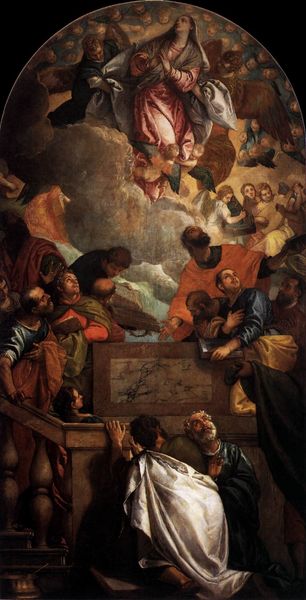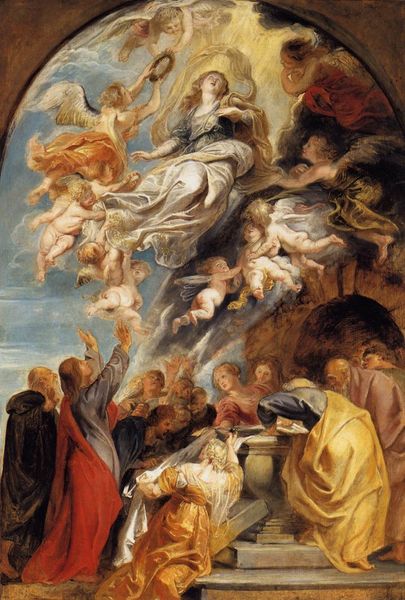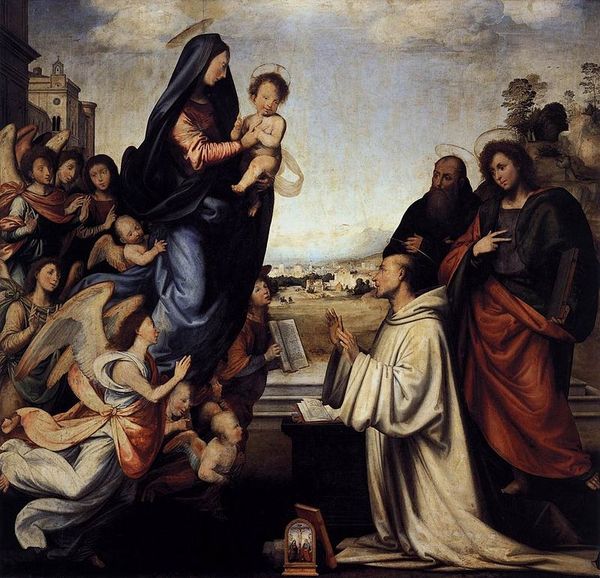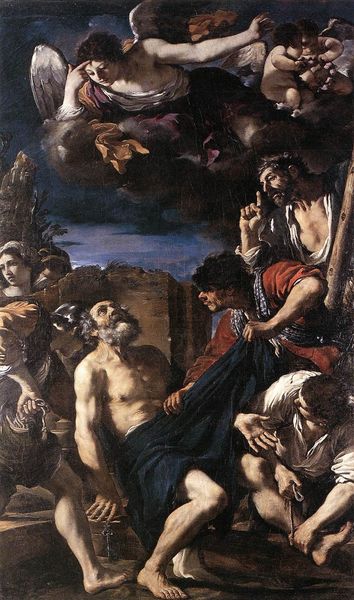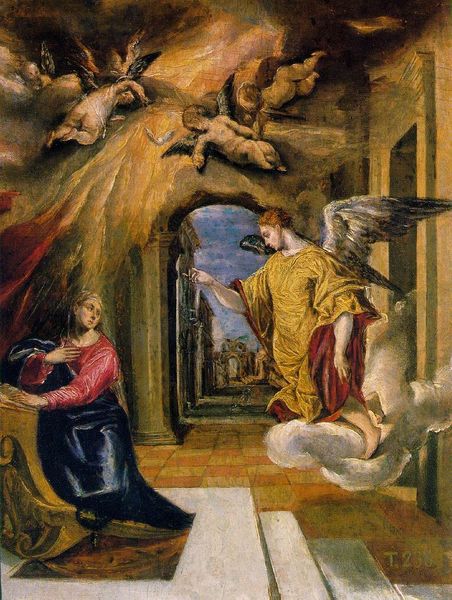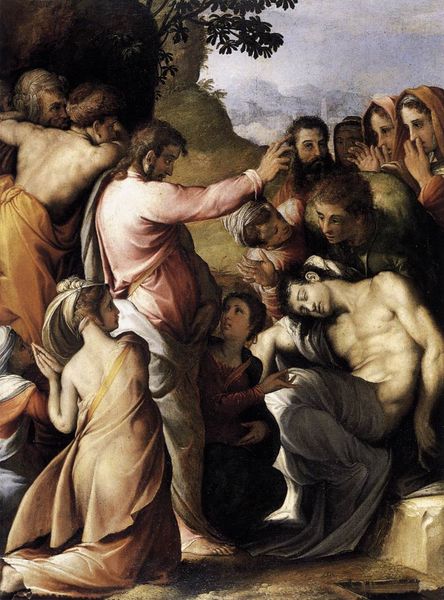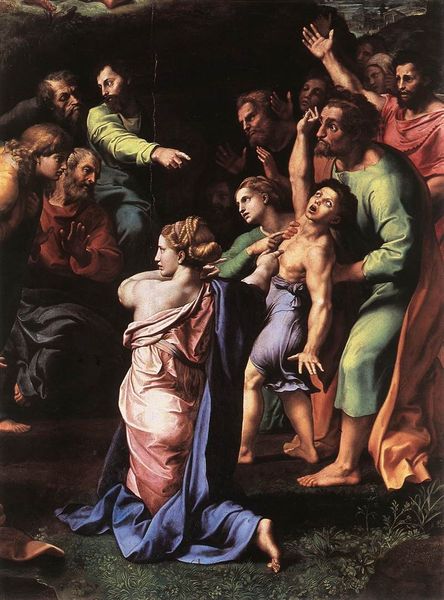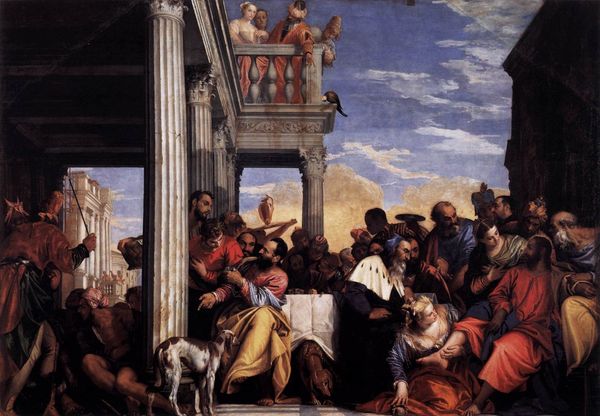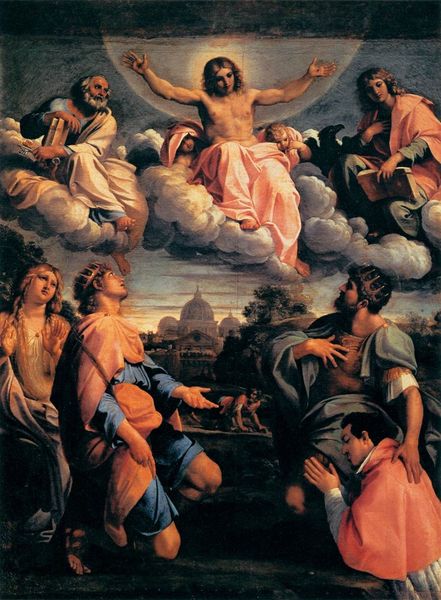
painting, oil-paint
#
portrait
#
allegory
#
baroque
#
painting
#
oil-paint
#
figuration
#
11_renaissance
#
oil painting
#
underpainting
#
christianity
#
mythology
#
painting painterly
#
history-painting
#
italian-renaissance
Dimensions: 155 x 245 cm
Copyright: Public domain
Editor: Here we have Annibale Carracci's "The Assumption of the Virgin," painted around 1590. The scene is chaotic yet ethereal, rendered in oil paint. What strikes me is how earthbound the apostles appear compared to the Virgin floating towards the heavens. What are your thoughts? Curator: Note how Carracci uses readily available pigments of the era, such as ochre, lead white, and azurite, and processes them with oil for optimal saturation. Consider also the canvas preparation – its weave and its layers of gesso affecting the final texture. These weren’t just aesthetic choices, but practical ones driven by workshop practices and economics. How do you see these materials affecting the symbolic weight of the image? Editor: I suppose understanding the material conditions shifts the focus from purely divine intervention to the very tangible human effort involved. Does this grounding in materiality detract from the spiritual message, or does it reinforce it? Curator: That’s the central question, isn't it? The church was, at the time, the largest patron of the arts. Can we interpret it, in this light, as strategic messaging? This opulent display of pigment and skilled labor could be seen as less about pure devotion and more about affirming power and authority through visual spectacle. Do you see an interplay between the overt religious subject matter and this potential display of wealth? Editor: It does make me reconsider the painting. It isn't just a religious depiction, but also a reflection of economic and social hierarchies, literally painted into the artwork with costly colors. I now see that the painting gives visual form to class and material dynamics of its time. Curator: Exactly. Recognizing this materiality shifts the ground beneath our feet, urging us to interrogate not only what we see, but also how it came to be made and by whom it was consumed.
Comments
No comments
Be the first to comment and join the conversation on the ultimate creative platform.
